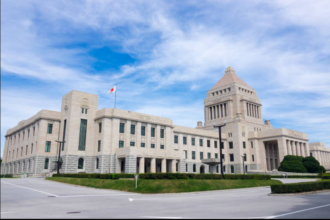Following violent conflicts brought on by calls to demolish the 17th-century Mughal emperor Aurangzeb Tomb, a curfew has been imposed in several areas of Nagpur, an Indian western state. Monday night’s upheaval started as stones were thrown in the Mahal area and cars caught fire.
Since then, police authorities have urged neighbors to keep the peace and reassured them that the matter is under control. Security has been strengthened, although central Nagpur businesses are still shuttered. More than fifty persons have been arrested; various Maharashtra districts have been highly alert to stop further escalation.
What preceded the violence?
Two Hindu groups, Vishwa Hindu Parishad and Bajrang Dal, burned an effigy of Aurangzeb and yelled chants calling for the destruction of his mausoleum, hence igniting the violence. The confrontation was exacerbated when Maharashtra Chief Minister Devendra Fadnavis told the state assembly that the demonstration resulted in rumors regarding the desecration of religious symbols, therefore igniting further strife.
Fadnavis said, “This seemed to be a well-planned attack,” adding that following evening prayers, around 250 Muslim males assembled and raised slogans. “The police had to act with force when people started threatening to set vehicles on fire,” he claimed.
Authorities said that many vehicles, including police vans, were set ablaze and that stone-pelting events were documented from several sites. Witnesses reported scenes of anarchy in which people sought cover as police tried to thin out the throngs.
The number of people affected?
According to Nagpur Police Commissioner Ravinder Singal, more than fifty persons have been arrested in the incident; thirty-three cops suffered injuries during the conflicts. He reassured us that rigorous steps were underlined to stop any more bloodshed. “We have found the main offenders; additional arrests will be made,” he stated.
Though no deaths have been recorded thus far, several individuals also suffered injuries. Many companies and stores are still closed, and to uphold peace and order, a strong police presence has been assigned to key areas.
Why does Aurangzeb's tomb become a political flashpoint?
About 500km (311 miles) from Nagpur in Maharashtra’s Chhatrapati Sambhajinagar area, Aurangzeb’s tomb has grown increasingly divisive. Originally called Aurangabad after the emperor, the area was recently renamed after Chhatrapati Sambhaji, a Maratha king who battled Aurangzeb and was finally taken prisoner and executed.
Hardline Hindu groups have demanded the tomb’s destruction in recent years, claiming that religious intolerance defined Aurangzeb’s rule. Following a regional politician challenging its existence and advocating its removal, the Aurangzeb Tomb was closed to visitors in 2022.
Historians are still split on Aurangzeb’s legacy. While some contend he was a despot who imposed rigorous religious rules and persecuted non-Muslims, others say he was a competent administrator who stretched the Mughal Empire to its largest geographical extent.
Has a Bollywood film shaped the demonstrations?
A recent Bollywood film showing the life of Chhatrapati Sambhaji started the most recent wave of demonstrations. The film shows how Aurangzeb captured and executed the Maratha king, fueling strong anti-Aurangzeb feelings among some parties.
“This movie has infuriated people against Aurangzeb,” Fadnavis remarked Tuesday in the state legislature. Although some critics contend that the movie sensationalizes the events, the director has defended its depiction by saying it is based on historical accounts.
The film has also generated discussions on social media, as many viewers demand the tomb of Aurangzeb be taken down. Tensions in the state have been exacerbated by some politicians using the film’s premiere to support their narratives of Aurangzeb’s tenure.
Whose political reactions have surfaced?
Critics of the government headed by Bharatiya Janata Party (BJP) have attacked it for allegedly neglecting law and order maintenance. Some Hindu nationalist politicians have publicly attacked Aurangzeb and strengthened calls for the destruction of his mausoleum.
Regional lawmaker Abu Azmi caused controversy earlier this month by asserting that Aurangzeb had even built temples and was not a terrible king. He said furthermore that India was considered a “golden bird,” generating a quarter of the world’s GDP at the time, and that its frontiers stretched to present-day Afghanistan and Myanmar during Aurangzeb’s dominion. Later, Azmi told the court his comments were misinterpreted in response to criticism; he was suspended from the Maharashtra state assembly, and an inquiry was launched against him.
Opponents of the BJP government in Maharashtra have attacked it for allegedly purposefully raising tensions to polarize voters before the next elections. Some experts believe that the revived attention on Aurangzeb is a component of a more general plan meant to boost Hindu nationalist feelings.
What Legacy Does Aurangzeb leave?
Aurangzeb, the sixth Mughal emperor, rose to rule India from 1658 to 1707. He was often portrayed as a devoted Muslim leading an austere life, so he grew his kingdom mercilessly. Although some historians contend he also sponsored the building of some temples, his rule was characterized by the application of rigorous Sharia laws, discriminating levies, and the destruction of Hindu temples.
Among modern Hindu nationalists, his policies—especially the jizya tax on non-Muslims and his military operations against Hindu kingdoms—have resulted in a generally bad impression of him. Some academics counter that he appointed Hindu officials to high-ranking posts inside his court and that his government was pragmatic.
The continuous debate around Aurangzeb’s tomb mirrors the general conflicts in modern Indian politics and culture. Nowadays, the problem goes beyond historical memory into ongoing political disputes, with fans and detractors leveraging his legacy to advance their stories.
Next: What?
Authorities still urge for peace while closely observing events since the situation in Maharashtra is still unstable. Curfew rules still apply, and extra police units have been sent into delicate areas.
Experts caution that the current debate can cause more disturbance if not properly managed. Elections are imminent, and Maharashtra’s political environment is predicted to remain hot, with historical personalities like Aurangzeb still influencing modern political rhetoric.
Civic leaders and academics have also pushed for a more nuanced conversation about history, stressing the need to learn from the past instead of using it to support current differences.
The destiny of Aurangzeb’s Tomb is unknown as Maharashtra works through these difficulties. Will it be taken down as certain organizations demand, or will it remain a historical monument? The response to this question can help define the political and social scene of the state in the next months.








